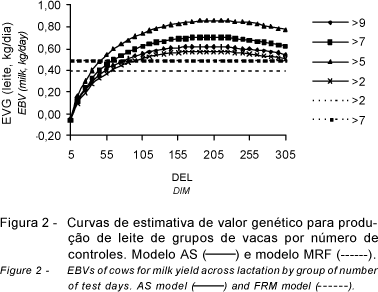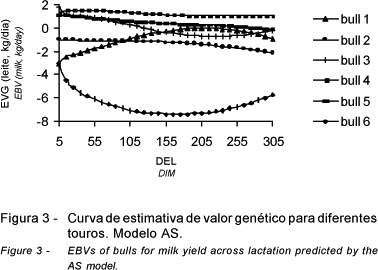Data consisting of 263.390 test day records (PDC) of 32.448 first lactation Holstein cows were used to compare three random regression test-day models (RR), a repeatability test-day model (RM) and a 305-d lactation model (P305) for breeding value (EBV) prediction of milk yield. One RR model used the logarithmic function of Ali & Schaeffer (AS) and the other two models used the exponential Wilmink function in its standard form (W) and a modified form (W*). The required covariance parameters were previously estimated from the same covariance functions and models. Standard deviations (SD) of EBVs for bulls were similar for AS, W* and RM. SD of EBVs for cows were larger for test-day models than for P305 and for bulls they differed by -33.64 to +321.95 from the P305 depending on progeny number. SD of EBVs for bulls and cows for the W were the largest ones. Correlation between EBVs of P305 and EBVs of the other models for bulls increased as progeny number increased and ranged from 0.66 (P305-W) to 0.92 (P305-AS, P305-W*). Genetic trends were largest for RR and smaller for RM than for P305. RR models provide more information than the RM and describe the shape of the lactation curve from which EBVs for persistency can be derived. The AS was the best function to fit RR test-day models and may be an alternative to replace the lactation model for genetic evaluation of milk yield in Holstein cattle in Brazil.
genetic evaluation; random regression model; selection; test day model

















